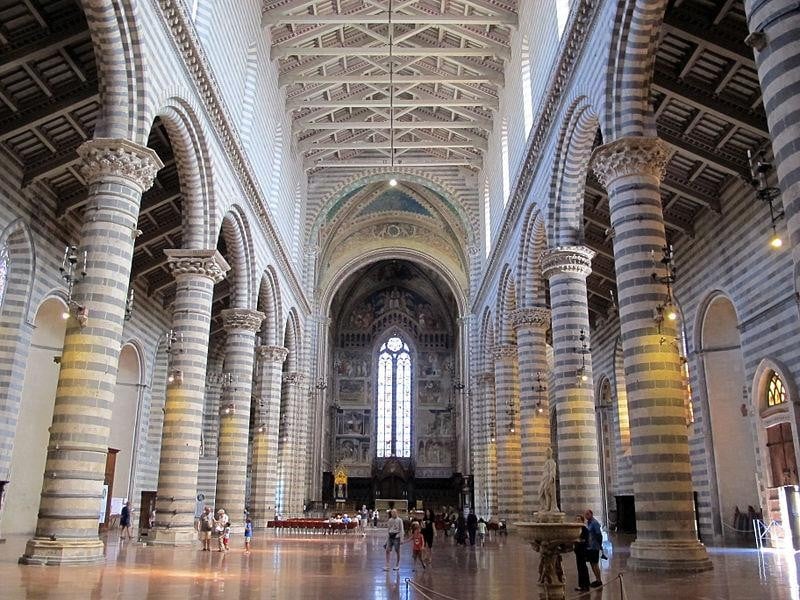Cattedrale di Santa Maria Assunta (Duomo)
The construction of the Church was started in 1290 by Pope Nicholas IV, designed in Romanesque style probably by Arnolfo di Cambio. The early fourteenth century assumed the role of master builder, the sculptor and architect Lorenzo Maitani of Siena, which expanded in the Gothic apse and transept and determined the appearance of the facade, although work continued over the years, up to completion in 1500, by the work of Ippolito Scalza, who built three of the four spiers. The bas-reliefs that decorate the lower part of the facade is one of the best examples of Gothic sculpture in Italy: describe the destiny of man, from the Creation to the Last Judgment. The rose window is the work by Orcagna (1354-1380); twelve newsstands side are Petruccio di Benedetto from Orvieto (1372-1388); mosaics, made by various authors, dating back to the fourteenth century. The interior dates back to the thirteenth and fourteenth century and is a basilica plant: the longitudinal body has three aisles wide and bright, covered by a ceiling with wooden trusses, with ten large pillars round and octagonal and round arches. The walls of the nave and its pillars are characterized by alternating bands of basalt and travertine. The only ancient glass window is the apse, made by Giovanni di Bonino in 1328-1334, while the longitudinal body are modern, neo-Gothic style (1886-1891). The Chapel of St. Brizio, dedicated to the patron of Orvieto, was built in the years 1408-1444 and painted in 1447 by Beato Angelico with the help of Benozzo Gozzoli, which was responsible for the decoration of two of the eight sails of the two vaults depicting The "Christ the Judge between Angels" and "The Choir of Prophets". The work was completed in 1504 by Luca Signorelli, who also built the skirting of the walls with a complex iconographic program dedicated to the great poets of antiquity. At the center of the Chapel, in the Baroque altar by Bernardino Cametti of 1715, is the famous Madonna of St. Brizio. On the left transept, opens instead the Chapel of the Corporal, built between 1350 and 1356 to conserve the precious relic to the Duomo di Orvieto whole was born: the bloody linen used in the miraculous Mass at Bolsena (1263). The Chapel was frescoed in the years 1357-1364 by Ugolino di Prete Ilario, the same who worked on the frescoes of the Main Chapel (presbytery), depicting Stories from the Life of the Virgin. Along the left aisle, note the fresco of the "Madonna and Child with Angels" by Gentile da Fabriano (1425).







